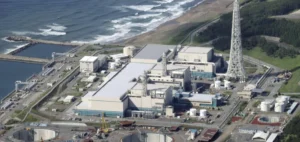The Nuclear Regulation Authority (NRA), Japan’s nuclear safety regulator, has reported mishandling of sensitive documents at the Kashiwazaki-Kariwa nuclear plant operated by Tokyo Electric Power Company Holdings (TEPCO), just 48 hours before a political vote in Niigata on a partial restart of the facility. The incident has reignited criticism of the operator’s safety culture, previously sanctioned in 2021 by an operational ban at the same site.
A heavy legacy at a critical moment
Kashiwazaki-Kariwa is the world’s largest nuclear complex with seven reactors totalling around 8 GW of capacity. The site has been offline since 2012. Although the NRA lifted its administrative ban on fuel movement in late 2023, it made any restart conditional on additional inspections. Niigata Governor Hideyo Hanazumi is expected to approve the restart of reactors 6 and 7, representing 2.7 GW, pending a prefectural assembly vote.
The case involves several documentation errors, including the transfer of classified materials to a subcontractor, according to the NRA. This subcontractor link, now identified as critical, could be subject to new contractual obligations and enhanced oversight. The Ministry of Economy, Trade and Industry (METI) continues to support a nuclear restart to reduce reliance on liquefied natural gas (LNG) and lower electricity costs.
Market impact and industry implications
On financial markets, TEPCO’s share price declined without collapsing, as investors viewed the incident as a delay risk rather than a permanent halt. Restarting the two units could improve the utility’s annual results by around JPY100bn ($665mn), thanks to reduced fossil fuel imports. The added nuclear capacity would also ease domestic LNG demand, potentially weighing on spot prices in Northeast Asia.
In the short term, delays in commissioning would favour cash flows from non-nuclear operations and public compensations. However, failure to restart would impact TEPCO’s strategic outlook, with its valuation highly dependent on reactivating its nuclear assets. For industrial users in the Tokyo region, the restart would offer tariff stability and greater flexibility for TEPCO in balancing long-term supply contracts and spot purchases.
Regulatory and reputational consequences
The NRA may issue further injunctions or administrative orders if systemic failures are identified during its investigation. The incident directly breaches obligations under Japan’s Nuclear Reactor Regulation Act and International Atomic Energy Agency (IAEA) safety standards. No evidence currently points to external compromise, making criminal proceedings unlikely at this stage.
In terms of governance, the Nuclear Damage Compensation and Decommissioning Facilitation Corporation (NDF), TEPCO’s majority public shareholder, may increase pressure on the operator to strengthen internal controls. METI could also demand expanded reporting and independent audits. The political credibility of the restart will hinge on the tone adopted by Hanazumi and Niigata’s assembly.
Geopolitical consequences and future risks
The Kashiwazaki-Kariwa case remains central to Japan’s energy strategy, aimed at reducing imports of Russian and Middle Eastern LNG. A prolonged halt would sustain Japan’s LNG demand, structurally supporting regional prices. Internationally, the case will be closely watched by G7 partners, as Japan seeks to reposition nuclear power as a decarbonisation tool.
The key challenge for TEPCO is proving a meaningful transformation in its safety culture. Increased scrutiny of subcontractors, training, and document management points to a shift in focus towards procedural security. The restart’s success will shape Japan’s energy credibility and long-term nuclear investment prospects.






















